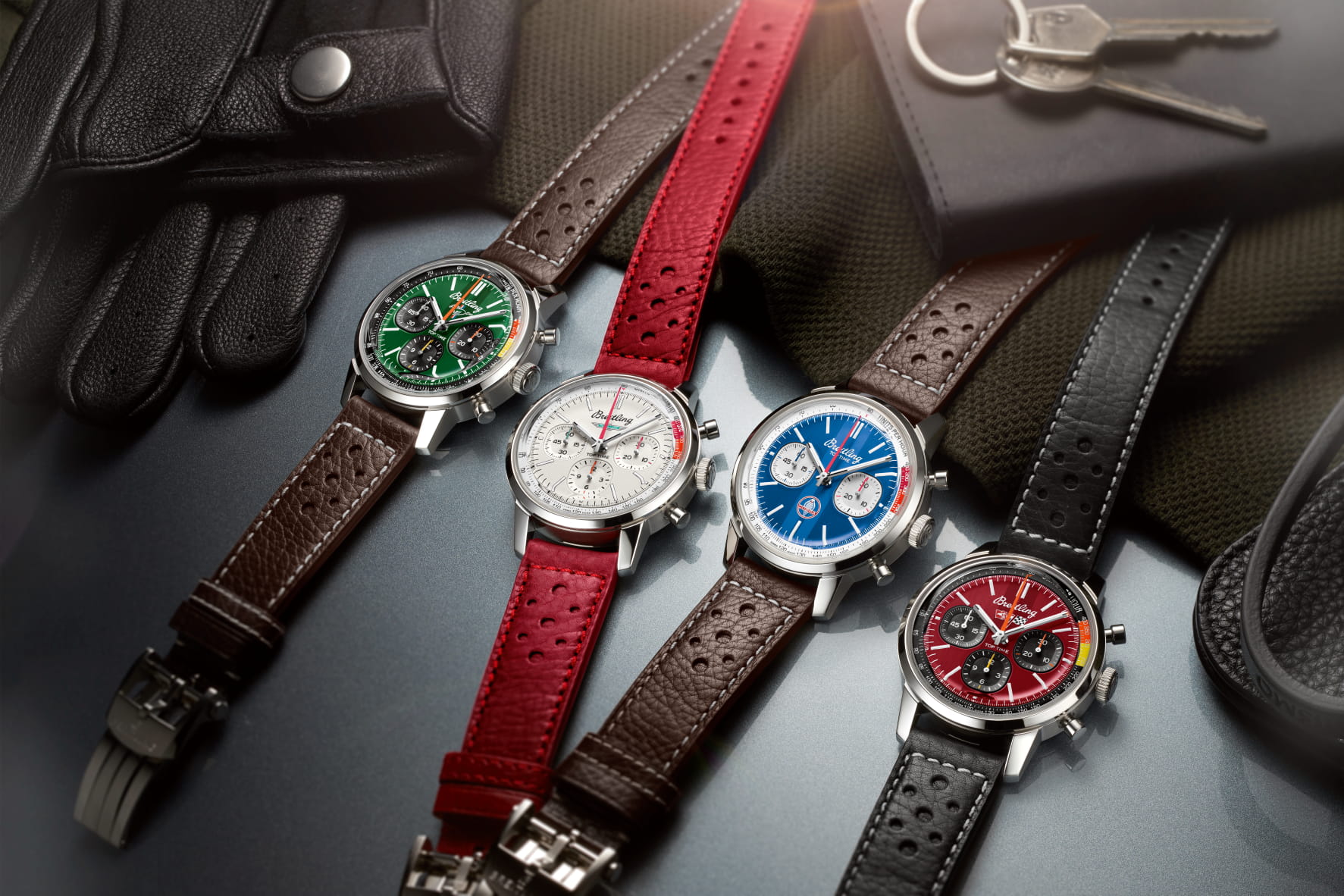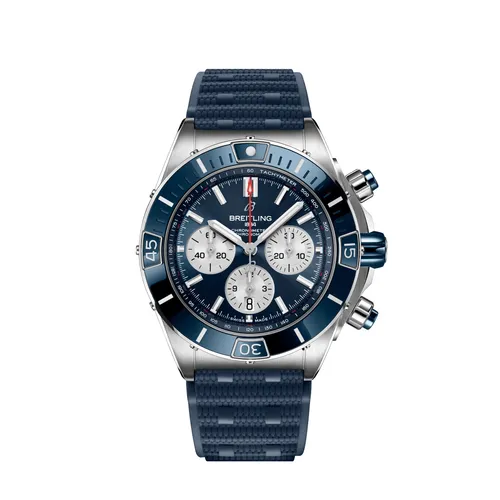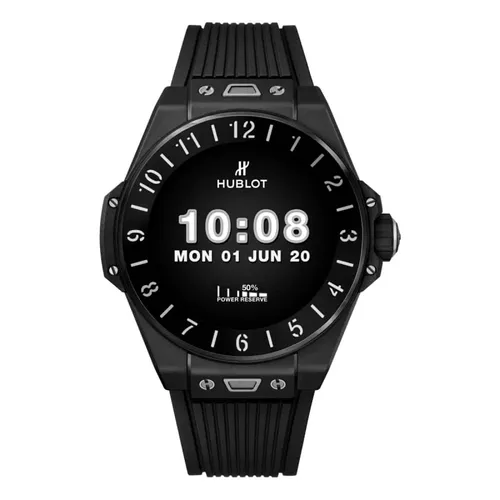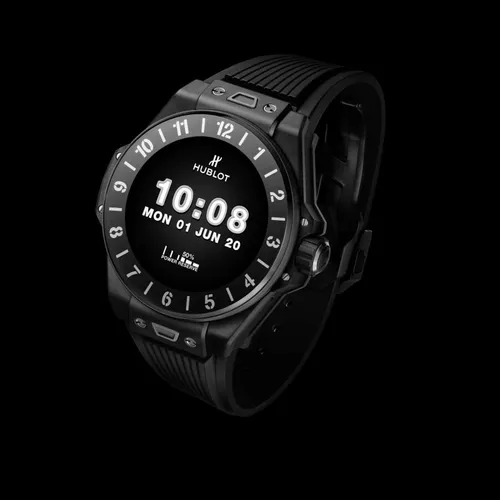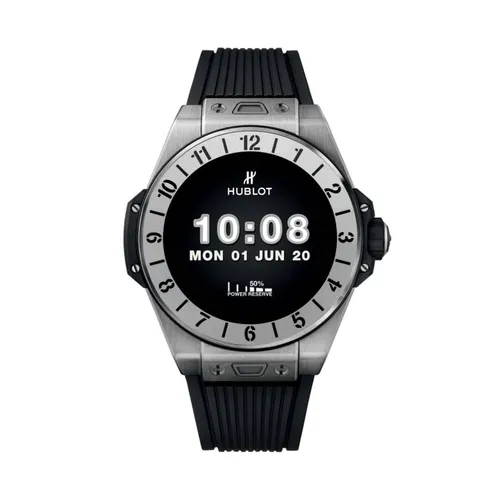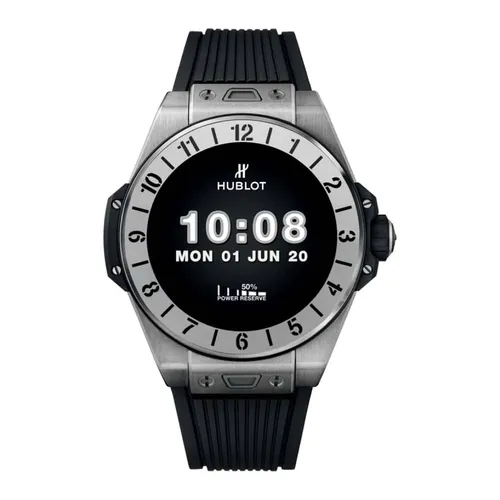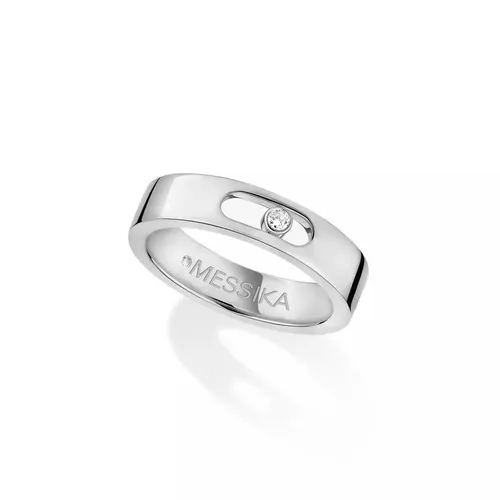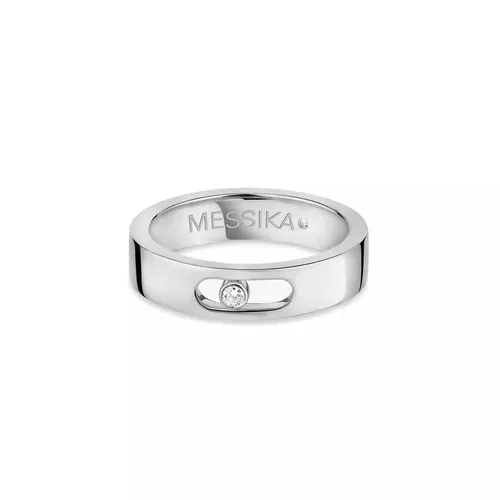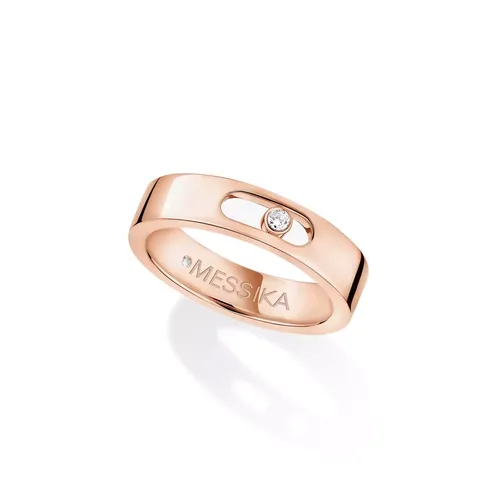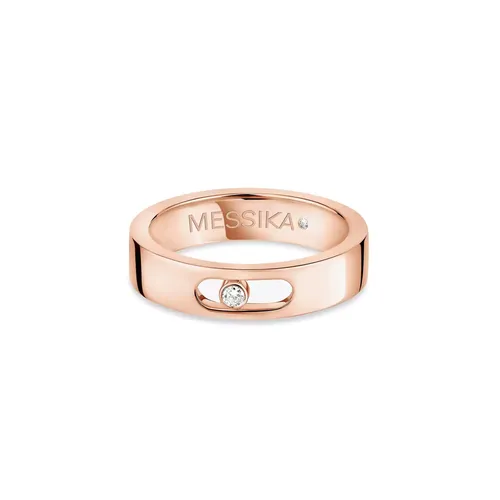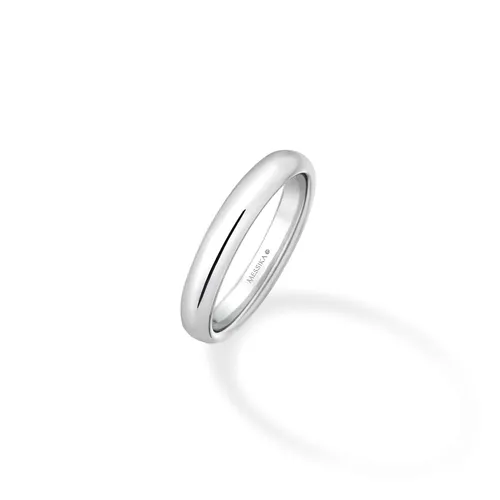Breitling
- All brands
- Rolex
-
Watches
![Tank Must de Cartier XL...]()
![Tank Must de Cartier XL...]()
Tank Must de Cartier XL Model Watch
41 mm steel case, self-winding movement, steel bracelet
5,800 €In stock![Santos-Dumont de Cartier...]()
![Santos-Dumont de Cartier...]()
Santos-Dumont de Cartier Watch Small Model
38 mm steel case, quartz movement, leather strap
4,200 €In stock![Breitling Super Chronomat...]()
![Breitling Super Chronomat...]()
Breitling Super Chronomat B01 44 watch
44 mm steel case, self-winding movement, rubber strap
9,550 €In stock![Omega Chronoscope...]()
![Omega Chronoscope...]()
Omega Chronoscope Chronograph Co-Axial Master Chronometer Watch
43 mm steel case, self-winding movement, leather strap10,000 €In stock![Omega Diver 300M...]()
![Omega Diver 300M...]()
Omega Diver 300M Chronograph Co-Axial Master Chronometer Watch
44 mm steel case, self-winding movement, rubber strap9,000 €In stock![Blancpain Fifty Fathoms...]()
![Paquet Auberi]()
Blancpain Fifty Fathoms Bathyscaphe Watch
43.6 mm ceramic case, self-winding movement, fabric strap14,850 €In stock -
Jewelry
![Messika Wedding Ring Size...]()
![Messika Wedding Ring Size...]()
Messika Wedding Ring Size 52 Diamond Paved Yellow Gold Move Joaillerie
yellow gold, white diamond
4,100 €In stock - Our stores
Watch Movements: Manual, Automatic, or Quartz

If the bracelet or case of a watch are immediately visible elements, the essential part lies elsewhere. To function, a watch relies on its movement. This term refers to all the internal mechanisms of a watch or clock that allow timekeeping and display. It constitutes the "heart" of the device, ensuring the operation of the hands or dial. However, there are different types of watch movements that can be important when choosing your watch.
The Mechanical Movement
The manual movement (or mechanical) relies entirely on the mechanical parts of the watch. Operating without a battery and without electronic components, this type of watch is divided into two categories: manual winding watches and automatic winding watches.
In the case of manual winding, the user must wind the watch manually by turning the crown to rearm the mainspring. In contrast, automatic winding is done thanks to a rotor that turns with the movements of the wrist. This rotor winds the mainspring without manual intervention.
Mechanical movements are appreciated for their complexity, craftsmanship, and the traditional feel they provide. However, these watches are generally less accurate than their automatic counterparts.
The Automatic Movement
The automatic movement is a type of mechanical movement that winds itself automatically thanks to the movements of the wrist of the wearer. It includes the same elements as the mechanical movement, with the addition of an oscillator and a rotor. The rotor, a semi-circular oscillating mass, turns freely and winds the mainspring with each movement of the wrist.
This type of watch does not require manual winding if worn frequently, and like mechanical movement watches, operates without a battery. They are generally more accurate than their counterparts… at least if worn regularly.
The Quartz Movement
The quartz movement uses a battery as a power source, and a quartz crystal to measure time. A quartz watch thus allows very precise timekeeping, at the cost of having to change the battery every two or three years on average.
However, there are some alternatives. Solar-powered quartz watches allow watch movements to be powered by natural or artificial light captured by a solar panel on the dial, which is transformed into electrical energy. This energy can be stored for months.
Another possibility: autoquartz watches. Kinetic quartz movement watches represent a hybrid solution, simulating the rotor of automatic watches to generate the necessary energy for the quartz watch battery. However, this model is still relatively uncommon.
How to Choose Your Watch Based on Its Movement?
Choosing a watch based on its movement primarily depends on your own priorities. If you are looking for a watch that keeps time precisely, quartz watches will likely be your priority. They are also cheaper (generally) than manual or automatic movement watches, making them an excellent choice for your budget.
However, there are also aesthetic considerations to take into account. Automatic and mechanical watches are a marker of elegance, honoring traditional craftsmanship, making these models popular choices. Finally, the reputation of a brand also comes into play. For example, Rolex is renowned for the excellence of its automatic movement watches.
Choosing the right watch movement for your watch depends on your personal preferences in terms of precision, budget, lifestyle, and appreciation of watchmaking craftsmanship. By understanding the differences between mechanical, automatic, and quartz movements, and evaluating your own needs and preferences, you can make an informed choice that will bring you satisfaction in the long term.
In watchmaking, the movement is the central element that ensures the proper functioning and accuracy of a watch. Whether it is mechanical, automatic, or quartz, each type of movement offers specific advantages and caters to different preferences in terms of tradition, precision, and maintenance. Feel free to consult Auberi's catalog to find the watch that suits you best!
